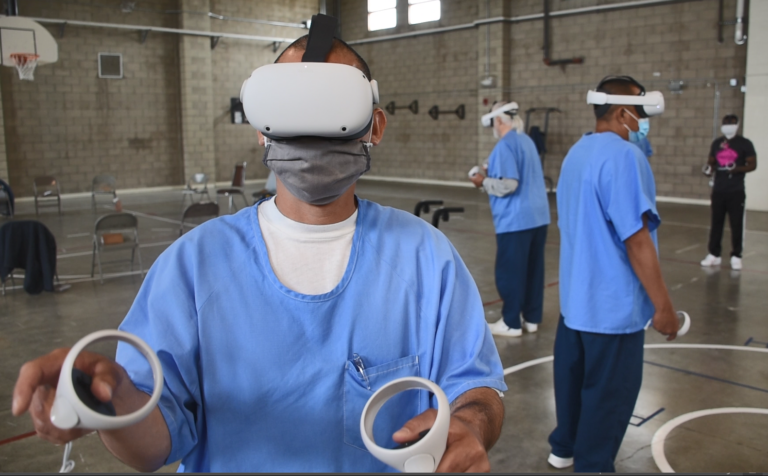
Virtual Reality (VR) is being used to help juvenile prisoners re-enter the world after serving their sentences. The technology is being utilized in rehabilitation programs to provide prisoners with the skills and knowledge they need to successfully reintegrate into society. By immersing prisoners in simulated real-world scenarios, VR allows them to practice and develop important skills such as problem-solving, communication, and empathy.
The use of VR in rehabilitation programs for juvenile prisoners is still in its early stages, but initial results have been promising. A study conducted at the Rikers Island prison in New York City found that VR-based rehabilitation programs led to a reduction in recidivism among participants. The study also found that prisoners who participated in the VR program were more likely to find employment after their release and had lower rates of substance abuse.
One of the key benefits of using VR in rehabilitation programs is that it allows prisoners to practice skills and behaviors in a safe, controlled environment. For example, VR simulations can be used to teach prisoners how to handle difficult situations or how to interact with others in a positive way. This can be especially beneficial for juvenile prisoners, who may not have had many opportunities to develop these skills before being incarcerated.
Another benefit of using VR in rehabilitation programs is that it can help to reduce the stigma associated with being a prisoner. Many prisoners feel that they are judged and stigmatized by society, which can make it difficult for them to re-enter the world after being released. VR can help to reduce this stigma by allowing prisoners to experience different perspectives and understand the impact of their actions on others.
In conclusion, the use of VR in rehabilitation programs for juvenile prisoners is a promising development. It has the potential to provide prisoners with the skills and knowledge they need to successfully reintegrate into society, while also helping to reduce recidivism and the stigma associated with being a prisoner. As more research is conducted and more programs are implemented, it is likely that we will continue to see the positive impact of VR on the rehabilitation and reintegration of juvenile prisoners.